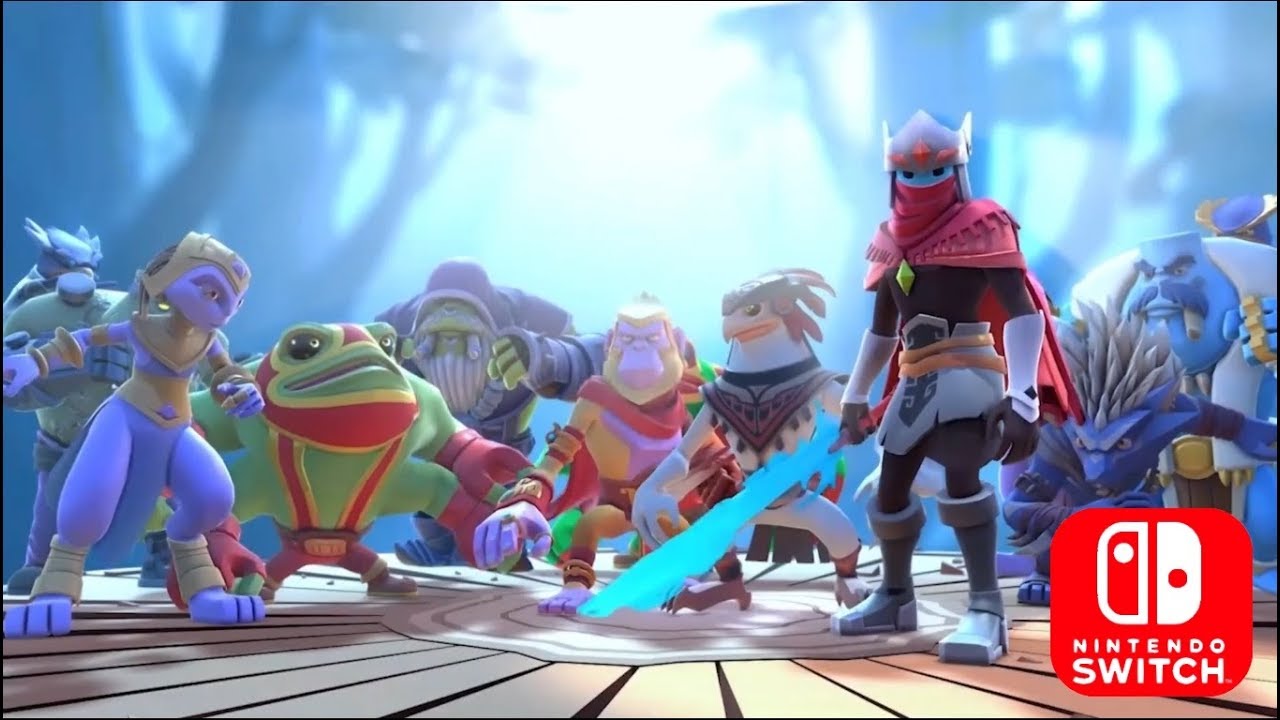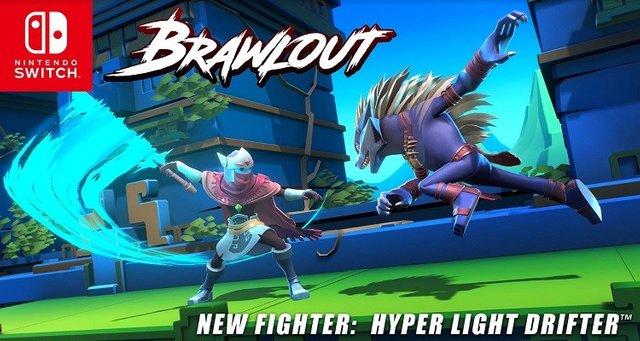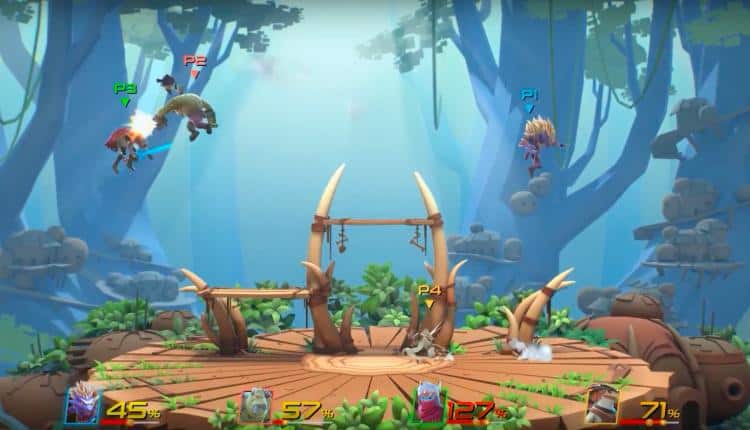Brawlout Review - Still a little Smash Bros on the Switch

It is impossible to talk about Brawlout without talking about Super Smash Bros. to have. Both visually and in style of play, the game is almost identical to the Nintendo franchise - but with a few nice personal ideas.
Let's start at the core: Brawlout is a fighting game in which you can fight with up to four men at once. Each blow allows the percentage to rise at an opponent, causing him or her to fly further away in the event of a blow. If a character shoots out the level, he loses a life.
We know this formula from Smash Bros, but it is still quite unique in fighting games. Each character also has a number of special and basic attacks that can not be threaded into complex combos. It makes Brawlout a somewhat airy game, in which you tackle the other players with a limited arsenal and fly in all directions.
A layman would therefore call Brawlout a party game instead of a competitive fighting game, but the practice is different. The simple attack set of each character may offer less variation, but the emphasis is much more on your own reflexes and quick thinking. You do not count frames in Brawlout, but use your character as an extension of your own instinct. If you take on someone of your level, then his pots are both intense and hilarious. A combination that we encounter in just a handful of multiplayer games.

Nintendo charm
The Brawlout fighting system may be at the level of recent Super Smash Bros. games. On the other hand, the charm of Nintendo's own series is clearly lacking in this alternative. Virtually all the characters in the game were devised by the developer, except for two cameos from Guacamelee and Hyper Light Drifter. These characters lack the personality we know from Nintendo. Perhaps it is unfair to compare the design of Nintendo game figures with those of a small studio, but the identical game systems make it impossible not to continuously align them while you play.
In addition, you will not find the randomness of a Nintendo game here. There are no random objects and weapons that fall down and levels barely change while you're fighting. That's fine for the eSporter who only wants to play with Fox at Final Destination, but it makes Brawlout the lesser party game.
And then there is the gravel. When you start Brawlout for the first time, you have access to half of all characters and three levels. If you want more, you will have to save two different currencies to buy pinata, in which a random character, skin or other cosmetic upgrade can be found. It smells like loot boxes like in Battlefront 2, but oddly enough, Brawlout does not have microtransactions to purchase these pinata's. Fine, but you are still grinding every day to unlock your wanted characters and levels. Every day you get a number of missions with which you earn a little bit of the required currency, just like in a free-to-play game.

The above criticism does not weigh heavily for a specific audience: the Melee players. The small subset of Smash Bros. fans who have been playing the GameCube version at a high level for years and are competing with the most advanced Street Fighter players. And Brawlout is clearly meant for that.
The gravel for a new character is painful when you occasionally play a game, but is hardly an objection for someone who wants to master his or her character. The same applies to the missing party elements, and even the somewhat less characterful characters are slightly less of an objection at a high level.
What we worry about for this group of players is the online multiplayer. With our reviews we only managed to play a handful of jars, because there were few journalists online. What struck them was that the game uses peer-to-peer technology where no servers are involved. This creates varying experiences, where one badly configured router can ruin the fun for both.
It is brave anyway that the developer of Brawlout dares to focus on such a specific target group. Smash Bros. players are only a small club in 2017, and the most competitive players are an even smaller niche. That just for them now is a fighting game for a Nintendo platform feels like magic.

Brawlout is now available for Nintendo Switch. An early access version is available on Steam. In addition, the game will be released in 2018 to PlayStation 4 and Xbox One.
Conclusion
It is easy to call the new Brawlout a Super Smash Bros. clone. Somewhere you would also be right, because the core of the game is very reminiscent of Nintendo's fighting game series. But where Smash Bros. a party game, Brawlout feels much more as a competitive title. One that old players from Smash Bros. Melee might be tempted. You just have to be prepared to grind a lot to unlock all game elements.
➕ Surprisingly deep, contains elements such as wavedashing
➖ Missing the charm of the 'original' Smash games, lots of grinding to unlock characters

My Latest Posts:
- Okami HD Review - Divine beauty
- Wolfenstein II: The New Colossus Review - The Adventures of Gunslinger Joe
- EA Sports UFC 3 Preview - More strategic, but not more fun
- Syberia 2 Switch Review - Continues in story, not in the rest
- Steep road to the Olympics Review - Lot of content and finally adds some more variety to Steep
- Dead Rising 4 PS4 Review - Crazy weapons
